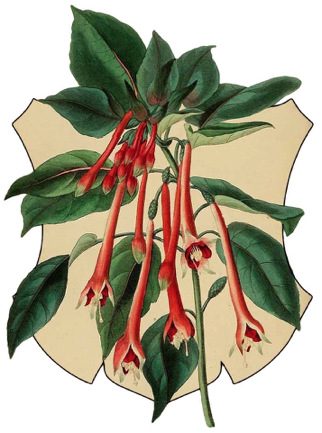The heraldry of the fuchsia. Flowers & false starts
Sunday, June 15, 2014

I would have thought that an handy old book called Flowers and Heraldry by Robert Tyras (London 1851) would show all sorts of fuchsias planted in nineteenth-century heraldic fields, its popular flowers gracing its pales and bends and fesses. Hanging, as fuchsias are wont, from a chief? No. Except for a single poem at the head of Chapter II, it doesn’t.
On Azure field a Pale engrailed of gold,
Whereon a Fuchsia pendant lies,
Between six daisies which unfold
Their pearly faces to sunny skies.
Where’er we seek in Nature, there we find
Sweet Innocence and Elegance combined.
—attributed to an “Anon. Roll of Arms”

The gentle Mr. Tyras, whoever he was, had simply taken a flight of fancy to present what would otherwise have been a rather ordinary primer of heraldry. With a good helping of moralizing, of course. Victorian writers were very fond of moralizing. Sadly for the good fuchsia, the colored illustration at the head of the same chapter as its poem just delves further into the middle of it for another flower’s lesson. There, a snowdrop nods off wedged between two perky pinks waiting in the flanks.
More on the Heraldry of the Fuchsia: ➤ The Isle of Man.
(Illustrations: 1. Fuchsia fulgens. J. Paxton. Magazine of Botany and Register of Flowering Plants, vol. 5, p. 221,1839. 2. Detail of the illustration at the head of Chapter II. Robert Tyras. Flowers and Heraldry, (London) Plate III, 1851.)